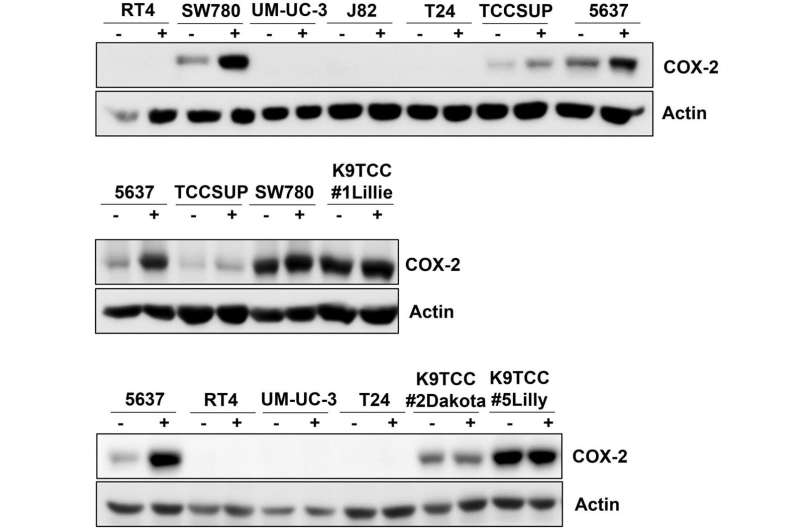Detection of tyrosine kinase inhibitors-induced COX-2 expression in bladder cancer by fluorocoxib A

Cyclooxygenase-2 is overexpressed in bladder cancer cells, making it an attractive molecular target for the detection and treatment of cancer.
The effects of TKIs on bladder cancer in vivo were evaluated using the COX-2-expressing K9TCC 5Lilly xenograft mouse model and detected by fluorocoxib A. The increased COX-2 expression was detected by all tested TKIs in at least one of the tested COX-2-expressing bladder cancer cell lines in vitro.
Dr. Maria Cekanova from the Department of Small Animal Clinical Sciences, College of Veterinary Medicine, The University of Tennessee, Knoxville, TN 37996, USA and the University of Tennessee and Oak Ridge National Laboratory, Graduate School of Genome Science and Technology, The University of Tennessee, Knoxville, TN 37996, USA said, "Bladder cancer is the 6th most common type of cancer in the United States and one of the most expensive malignancies to treat due to high recurrence rates and lack of improved treatment options over the past several decades."
Early detection of bladder cancer proves to provide better prognostic outcomes for patients diagnosed with bladder cancer.
This drives the need for improved detection and novel therapeutic options for patients diagnosed with both non-muscle invasive bladder cancer and muscle invasive bladder cancer.
Previous studies indicate that treatment with chemotherapeutic agents and targeted therapies, such as RTKIs, increased COX-2 expression in bladder cancer cells, glioma cancer stem cells, non-small cell lung cancer, and oral squamous cell carcinoma cells in vitro.
Overexpressed COX-2 in cancer can therefore be used as a target for the treatment and detection of bladder cancer.
This imaging agent has been extensively studied both in vitro and in vivo for the detection of cancer, demonstrating highly selective and specific uptake by COX-2-expressing cancer cells when compared to surrounding normal cells.
The Cekanova Research team concluded, "the increased COX-2 expression was detected by all tested RTKIs and TKIs in at least one of the tested COX-2-expressing bladder TCC cell lines (5637, SW780, TCCSUP, K9TCC#1Lillie, K9TCC#2Dakota, and K9TCC#5Lilly) in vitro. In addition, fluorocoxib A uptake correlated with the AB1010- and imatinib-induced COX-2 expression detected by IHC and WB analysis in the K9TCC#5Lilly xenografts in vivo. In conclusion, these results indicate that fluorocoxib A could be used for the monitoring the tumor's responses to targeted therapies in COX-2-expressing bladder cancers."
More information: Jennifer Bourn et al, Detection of tyrosine kinase inhibitors-induced COX-2 expression in bladder cancer by fluorocoxib A, Oncotarget (2019). DOI: 10.18632/oncotarget.27125

















